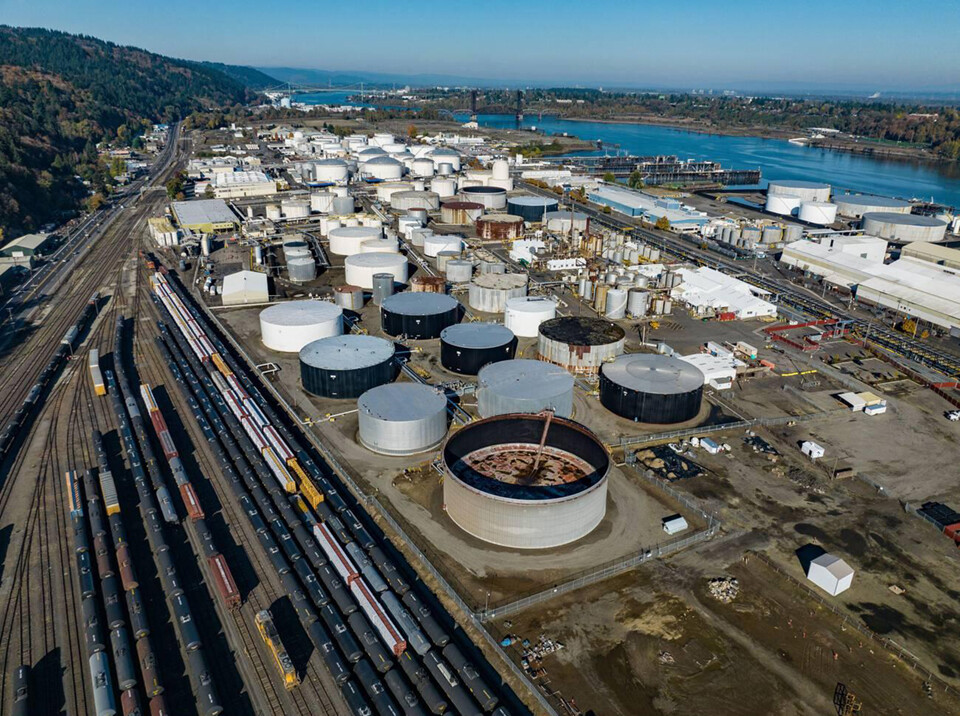Multnomah County Presses For Action on Deadly Gas Release During Potential Cascadia Earthquake

Research published in 2023 by Portland State University identified 70 “Tier II” facilities in Multnomah County- with the majority situated in soil zones that could liquefy, leading to chemicals being released from the facilities in the event of a Multnomah Cascadia Subduction Zone earthquake. The researchers found that 23 facilities should be assumed to be vulnerable to earthquakes, of the 27 hazardous material facilities located in Northwest and North Portland.
UPDATE: Portland Residents Demand Action To Avoid Toxic Catastrophe Along The Willamette River
Commissioners in Multnomah County are now urging lawmakers to address the threat of toxic gasses being released should a Cascadia Subduction Zone earthquake occur. This release would be catastrophic, and threaten the health of the more than 45,000 people who live or work near the CEI Hub. In the event of an earthquake, public response operations will be under pressure and will face significant barriers as they address widespread infrastructure damage. The potential of exposure to toxic concentrations of evaporating petrochemicals would be complicated by fires that are likely to start during the earthquake.
Holding a roundtable with state lawmakers on Wednesday, Multnomah County commissioners indicated that addressing the threat is one of their legislative priorities for the 2024 legislative session, which runs from February 5 to March 10. Asking lawmakers to respond to the county’s 2023 Hazardous Materials Report, prepared by Portland State University, Commissioner Jesse Beason stated that “in the event of a Cascadia Subduction Zone earthquake, toxic plumes from storage tanks could kill thousands of people and sicken tens of thousands.”
With over 1,000 above-ground chemical storage tanks built in North and Northeast Portland before current seismic standards were established. the county says hazardous gasses could emerge from storage tanks that are on soil that would liquefy when the ground moves, causing the tanks to rupture. A further 70 toxic chemical facilities are mostly located in soil zones that could also liquefy. The Critical Energy Infrastructure (CEI) Hub located along the Willamette River is the best-known threat of earthquake-induced hazardous material releases in Multnomah County. This CEI Hub could release between 65 and 194 million gallons of petrochemicals during a Cascadia Subduction Zone (CSZ) earthquake according to the PSU report.
Considering whether the combination of factors could affect communities, these warnings are issued in the context of a looming earthquake in the Cascadia Subduction Zone. The Oregon Shakeout website- operated by the Oregon Department of Emergency Management and other state and federal agencies, confirmed that Oregon lies at a convergent continental boundary where two tectonic plates collide. Extending 600 miles and situated offshore from northern California to southern British Columbia, the Cascadia Subduction Zone is a fault line. Building up stress as the Juan de Fuca and North American plates push against each other for hundreds of years, the two plates eventually rip apart and this process will create some of the largest tsunamis and earthquakes on the planet.
With the potential for a 9.0+ magnitude earthquake in the Cascadia Subduction Zone, the Oregon Office of Emergency Management confirms that the Cascadia Zone hasn’t produced an earthquake since 1700, but has been building up pressure as the Juan de Fuca plate subsides under the North American plate. Scientists are currently predicting a 37% chance of a megathrust earthquake with a magnitude of 7.1+ occurring within the next 50 years. A seismic event this size will be felt throughout the Pacific Northwest.
Commissioner Beason has reiterated that the first step is being taken to prevent deaths. is critical, Relying on a 2018 Oregon Department of Geology and Mineral Industries regional impact analysis of magnitude 9 conditions, the PSU report indicates that this is an initial study, encouraging further studies that will best guide mitigation efforts. They add that the scenarios set out are not comprehensive and there are many potential scenarios of how things could play out at facilities should uncontrolled releases occur.

Comments are closed.